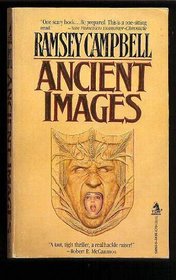Helpful Score: 1
From Publishers Weekly
British horror writer Campbell here focuses on one of his most intriguing inventions, a horror film supposedly starring Boris Karloff and Bela Lugosi, made in England in 1938 and immediately suppressed. When film editor Sandy Allen decides to track down a print of the film, her detective work leads her to Redfield, a rural community known for the delicious wheat that grows on its rich soil, fertilized by blood from an ancient massacre and, it turns out, in need of a fresh infusion every 50 years to maintain its fecundity. During her search, Sandy is shadowed by bizarre creatures that sometimes look like dogs and sometimes like scarecrows. After Sandy finally pins down the connection between the film and Redfield, the creatures come out of the shadows and reveal themselves. Campbell's novels tend to be dense and less accessible than his short stories, but this narrative seems more relaxed and simplified--perhaps his most readable effort since his debut in The Doll Who Ate His Mother.
British horror writer Campbell here focuses on one of his most intriguing inventions, a horror film supposedly starring Boris Karloff and Bela Lugosi, made in England in 1938 and immediately suppressed. When film editor Sandy Allen decides to track down a print of the film, her detective work leads her to Redfield, a rural community known for the delicious wheat that grows on its rich soil, fertilized by blood from an ancient massacre and, it turns out, in need of a fresh infusion every 50 years to maintain its fecundity. During her search, Sandy is shadowed by bizarre creatures that sometimes look like dogs and sometimes like scarecrows. After Sandy finally pins down the connection between the film and Redfield, the creatures come out of the shadows and reveal themselves. Campbell's novels tend to be dense and less accessible than his short stories, but this narrative seems more relaxed and simplified--perhaps his most readable effort since his debut in The Doll Who Ate His Mother.




